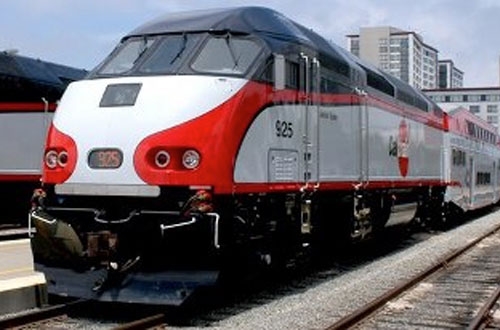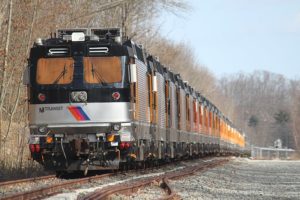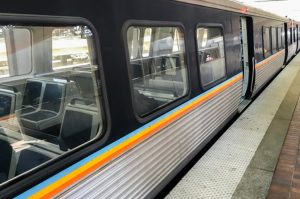Caltrain reviews budget, ridership increases
Written by Jenifer Nunez, assistant editor
California's Caltrain presented a preliminary report to the Peninsula Corridor Joint Powers Board, which owns and operates Caltrain, indicating the rail service's Fiscal Year 2014 budget will be balanced, but warning that Fiscal Year 2015 faces a significant budget shortfall.
Revenue increases due to historic ridership growth, savings from prior budget years and one-time-only stopgap funds will make it possible for Caltrain to put forward a balanced budget, reported Gigi Harrington, deputy CEO for finance.
However, Caltrain’s financial future remains uncertain beyond the next fiscal year, as the rail agency continues to grapple with a lack of dedicated funding.
As Caltrain has done in the past, the proposed FY14 budget was balanced using what is known as “one-time only” stopgap money. Throughout the past few budget cycles, these measures have included the use of regional funding through the Metropolitan Transportation Commission, stopgap funds and funds repaid to SamTrans for the purchase of the rail corridor. SamTrans has used that funding to cover its share of the operating deficit, which, in turn, has allowed Caltrain to maintain a robust level of service to meet the growing demand. With all of those funds exhausted, Caltrain says it will need to either identify a new funding source or consider service reductions for FY15.
“Caltrain is vital to the rebounding economy of our region, and demand for the service has never been higher,” said Ken Yeager, chair of Caltrain’s Joint Powers Board. “These historic ridership levels look like they will remain on track, so there will be no fare increases or reduction in service levels in this year’s budget.”
Caltrain’s total proposed operating budget for FY14 is $120 million, an increase of seven percent over the previous year’s budget. The increase is a response to Caltrain’s ridership growth. With such high demand, the complexity of operating the system and managing the contract is growing, leading to an overall increase in Caltrain’s operating budget.
As Caltrain ridership has increased more than 11 percent each year for the past three years. Caltrain is projecting farebox revenue of $66.1 million and parking revenue of $3.7 million for FY14.
Since 2010, Caltrain has experienced a 38 percent increase in ridership. As of the annual ridership counts conducted in Feb. 2013, Caltrain carries an average of more than 47,000 average weekday riders, nearly doubling its ridership since introducing the Baby bullet service in 2004. High demand has resulted in service constraints during the peak hour commute, with some trains operating at 130 percent of capacity.
Caltrain is looking at options for expanding its capacity. One possibility under consideration is the purchase of additional rail equipment.





